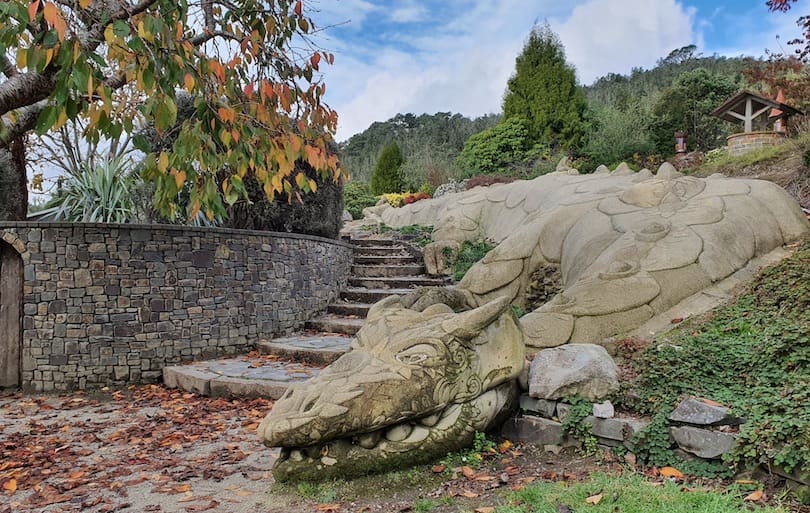Explore the 12 most fascinating pyramids in Egypt, showcasing their historical significance, architectural brilliance, and cultural impact. Unravel the secrets of these ancient marvels that continue to captivate the world.
Introduction
Egypt, the land of pharaohs and pyramids, has a rich historical tapestry woven with awe-inspiring monuments that continue to captivate the world. Among these majestic wonders, the pyramids stand as a testament to the extraordinary engineering prowess and cultural significance of ancient Egyptian civilization. In this comprehensive article, we embark on a journey to discover the 12 most fascinating pyramids in Egypt, delving into their history, construction, and enduring allure. Let’s step back in time and unveil the secrets of these enigmatic structures that have stood the test of millennia.
12 Most Fascinating Pyramids in Egypt
1. The Great Pyramid of Giza
The Great Pyramid of Giza needs no introduction, as it remains one of the Seven Wonders of the Ancient World. Constructed as the tomb of Pharaoh Khufu, this colossal pyramid boasts an impeccable alignment with astronomical precision. Its construction, believed to have taken over 20 years, still baffles modern architects and engineers. Theories abound about its construction techniques, but the exact methods remain shrouded in mystery.
2. The Pyramid of Djoser
The Pyramid of Djoser, located in the ancient Saqqara necropolis, stands as the earliest colossal stone structure in Egypt. Designed by the visionary architect Imhotep, this pyramid marks a significant shift in architectural evolution. Its six-tiered, step-like structure showcases the advancement of ancient engineering techniques, laying the groundwork for future pyramid designs.
3. The Bent Pyramid
The Bent Pyramid, also known as the Southern Shining Pyramid, exhibits a unique design with an angular change in its inclination. Believed to be built for Pharaoh Sneferu, this pyramid showcases the experimentation and learning that took place during its construction. The shift in angle halfway through the building process raises intriguing questions about the architectural knowledge of the time.
4. The Red Pyramid
Adjacent to the Bent Pyramid, the Red Pyramid is another marvel attributed to Pharaoh Sneferu. This pyramid, with its striking red limestone casing, is considered the first successful true smooth-sided pyramid. Its construction marked a breakthrough in pyramid-building techniques, leading the way for the famous pyramids of Giza.
5. The Pyramid of Khafre
The Pyramid of Khafre, the second-largest pyramid at Giza, stands as a symbol of ancient Egyptian pharaonic power. This pyramid is flanked by the Great Sphinx, adding an aura of mystery and grandeur to the entire complex. Though slightly smaller than the Great Pyramid, it still impresses with its immaculate construction and well-preserved upper casing stones.
6. The Black Pyramid
Located in the ancient city of Dahshur, the Black Pyramid is attributed to the enigmatic pharaoh Amenemhat III. As the first pyramid constructed during the Middle Kingdom, its unique design showcases a transition from the earlier pyramid styles. Its dark, exposed mudbrick core earned it the name “Black Pyramid” and adds an air of mystery to its historical significance.
7. The Pyramid of Menkaure
The Pyramid of Menkaure, the smallest of the three main pyramids at Giza, exudes a charm of its own. Built for Pharaoh Menkaure, it showcases the intricacies of pyramid construction while hinting at the legacy of pyramid-building techniques from the past. Its intimate size and location within the Giza complex make it a fascinating structure to explore.
8. The Pyramid of Khufu at Meidum
The Meidum Pyramid, also associated with Pharaoh Sneferu, represents an ambitious but unfinished attempt at pyramid construction. It initially started as a step pyramid, but the builders attempted to convert it into a true pyramid, resulting in a collapsed outer layer. Despite its incomplete state, the Meidum Pyramid remains an intriguing archaeological site.
9. The Pyramid of Amenemhat I
The Pyramid of Amenemhat I, situated in the el-Lisht necropolis, serves as the final resting place of the founder of the Twelfth Dynasty. Its construction showcases a unique regional architectural style, providing insights into the cultural and political nuances of the era.
10. The Pyramid of Senusret I
The Pyramid of Senusret I, another jewel of the el-Lisht necropolis, stands as a remarkable example of the Middle Kingdom’s pyramid-building achievements. The pyramid’s innovative construction and its adjoining mortuary temple highlight the cultural and religious significance of pyramids during this period.
11. The Pyramid of Unas
The Pyramid of Unas, located at Saqqara, is renowned for its well-preserved pyramid texts, making it an important source of knowledge about ancient Egyptian religious beliefs and rituals. These texts offer valuable insights into the afterlife beliefs and practices of the time.
12. The Step Pyramid of Sekhemkhet
The Step Pyramid of Sekhemkhet, also situated at Saqqara, represents a unique pyramid design attributed to Pharaoh Sekhemkhet. Sadly, it remains unfinished, raising questions about the reasons behind its incomplete state. However, its design provides a glimpse into the experimental phase of pyramid architecture.
FAQs
Q: Were pyramids only built for pharaohs?
A: While the most iconic pyramids were built as tombs for pharaohs, smaller pyramids and pyramid-like structures were also constructed for high-ranking officials and nobles.
Q: How long did it take to build a pyramid?
A: Constructing a pyramid was an immense undertaking that could span over several years or even decades, depending on the pyramid’s size and complexity.
Q: What materials were used in pyramid construction?
A: The primary materials used in pyramid construction were limestone, granite, and mudbricks. Limestone was commonly used for the outer casing, while granite was used for interior structures.
Q: How were the pyramids aligned with such precision?
A: The ancient Egyptians used astronomical observations and sophisticated surveying techniques to align the pyramids with celestial bodies and cardinal directions.
Q: What is the significance of the pyramid shape?
A: The pyramid shape was associated with the sun’s rays and symbolized the sun god Ra’s descending rays, connecting the pharaohs with divinity and the afterlife.
Q: Why did pyramid-building eventually decline?
A: Several factors contributed to the decline of pyramid-building, including economic challenges, political instability, and a shift in burial practices.
Conclusion
The 12 most fascinating pyramids in Egypt stand as living testaments to the ingenuity and cultural prowess of ancient Egyptian civilization. From the awe-inspiring Great Pyramid of Giza to the enigmatic Step Pyramid of Sekhemkhet, each pyramid offers a unique glimpse into the past, leaving us in awe of the incredible achievements of our ancestors. As we continue to unravel the mysteries of these ancient marvels, they remain timeless symbols of human creativity and ambition, bridging the gap between the past and the present.


















I was very happy to find this net-site.I wished to thanks for your time for this glorious read!! I positively enjoying every little little bit of it and I’ve you bookmarked to take a look at new stuff you weblog post.
Lovely just what I was searching for.Thanks to the author for taking his time on this one.
Some genuinely interesting points you have written.Helped me a lot, just what I was searching for : D.